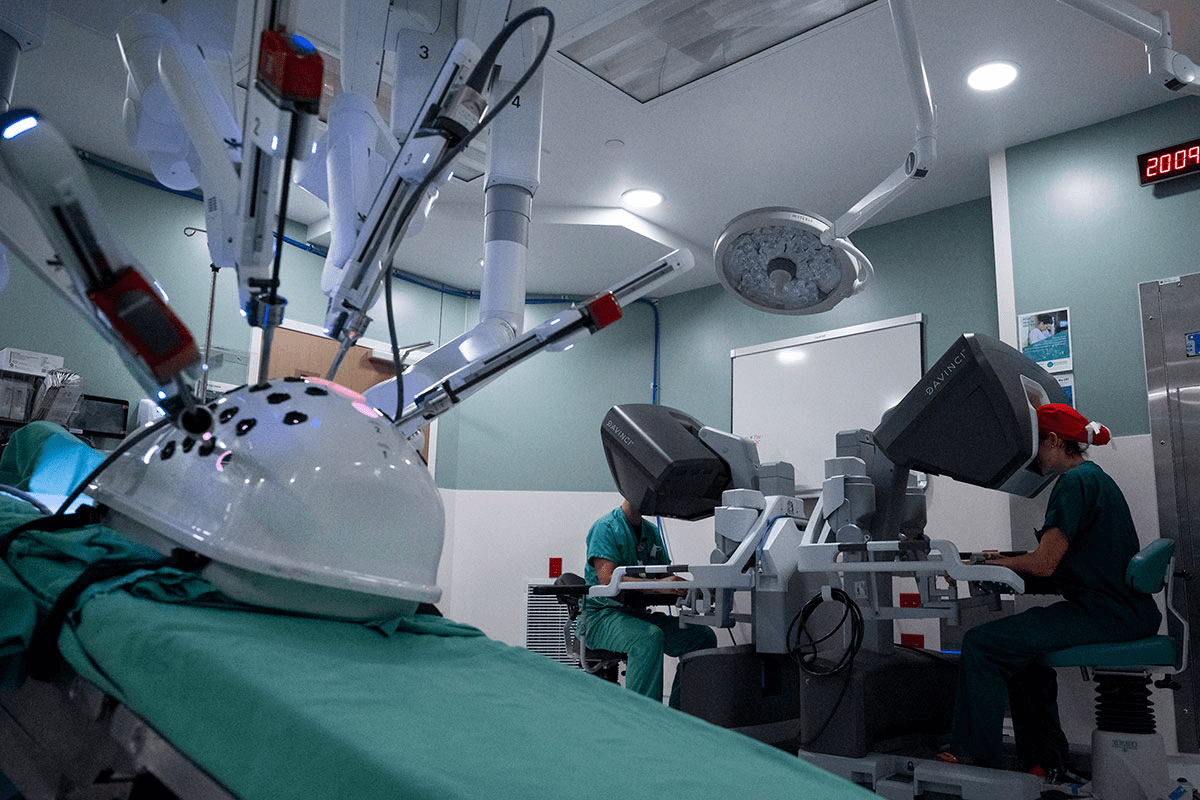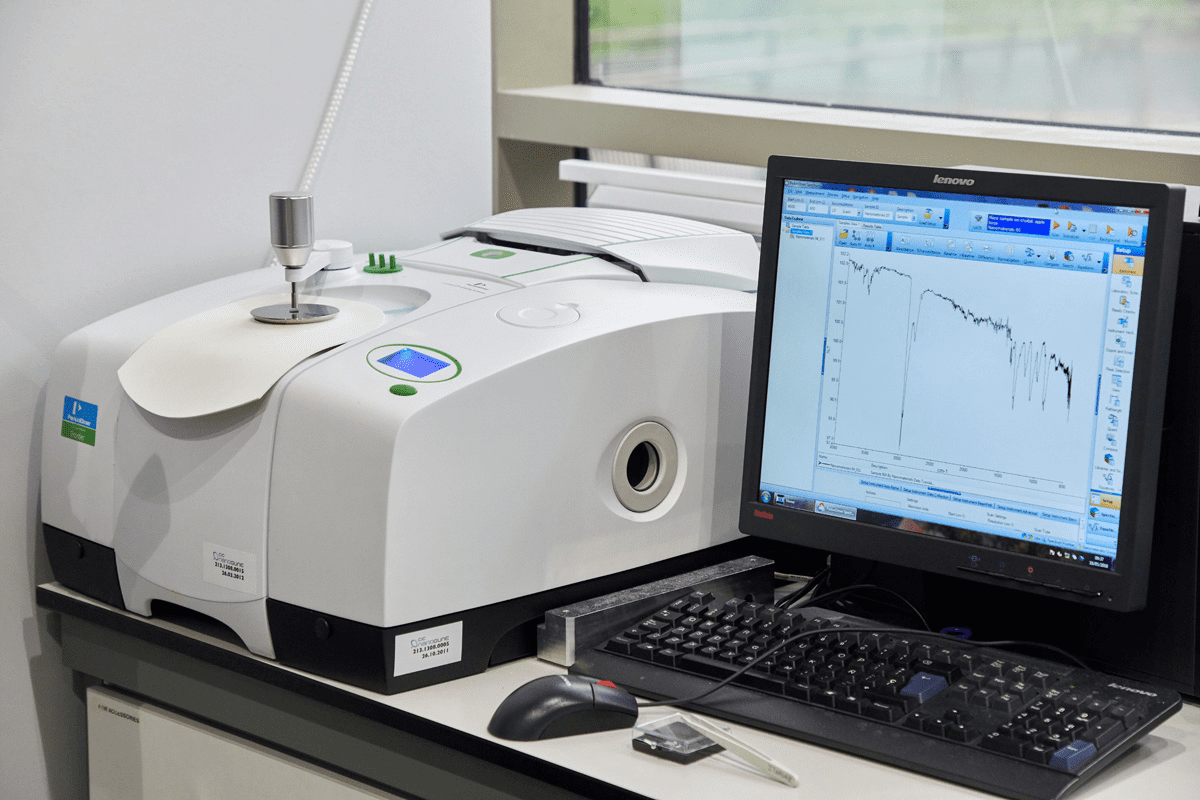Last Updated on November 27, 2025 by Bilal Hasdemir

At Liv Hospital, we are transforming cancer treatment with advanced cancer infusion therapy, delivering medication directly into the bloodstream for rapid and controlled delivery.
As a leading approach in modern oncology, IV chemo infusion allows for tailored treatment protocols, improving patient outcomes. With the growing number of cancer cases, the demand for infusion services is increasing, making it crucial for patients to understand their treatment options.
We are committed to providing world-class healthcare with comprehensive support for international patients, ensuring that our cancer treatment infusion services meet the highest standards.
Key Takeaways
- Cancer infusion therapy delivers medication directly into the bloodstream.
- IV chemo infusion allows for rapid and controlled delivery of medication.
- Tailored treatment protocols improve patient outcomes.
- Liv Hospital provides comprehensive support for international patients.
- Infusion services are increasingly in demand due to the growing number of cancer cases.
What Is Cancer Infusion Therapy?
Cancer infusion therapy is a cornerstone of cancer treatment, involving the intravenous administration of chemotherapy to combat the disease. As a cornerstone of cancer care, it provides a targeted approach to treating various types of cancer.
Definition and Basic Principles
Cancer infusion therapy, also known as intravenous (IV) chemotherapy, is a method of delivering cancer-fighting medications directly into the patient’s bloodstream. This approach allows for higher concentrations of the drug to be in contact with cancer cells, potentially increasing the treatment’s effectiveness.
The basic principle behind infusion therapy is to provide a controlled and precise delivery of chemotherapy drugs. By doing so, we can minimize the harm to healthy cells while maximizing the impact on cancerous cells.
“Infusion therapy has revolutionized the way we treat cancer, offering patients a more targeted and effective treatment option.”
How IV Chemotherapy Enters the Bloodstream
IV chemotherapy is administered through a vein, typically in the arm, using a sterile needle and catheter. Once the medication is infused into the bloodstream, it is distributed throughout the body, reaching cancer cells that may have spread to different parts of the body.
This method of delivery allows for the treatment of cancer that has metastasized, as the drugs can reach and destroy cancer cells in various locations.
Benefits of Direct Medication Delivery
The direct delivery of chemotherapy into the bloodstream offers several benefits, including:
- Improved efficacy: Higher drug concentrations can be achieved at the site of the tumor.
- Reduced side effects: By delivering drugs directly into the bloodstream, some side effects associated with oral chemotherapy can be minimized.
- Enhanced patient comfort: Infusion therapy can be administered in a controlled environment, providing patients with the support they need during treatment.
Overall, cancer infusion therapy represents a critical component of comprehensive cancer care, offering patients a targeted and effective treatment approach.
The Rising Demand for Cancer Infusion in America
The landscape of cancer treatment is shifting, with infusion therapy playing a critical role in meeting the needs of a growing patient population. As we examine the current trends and future projections, it becomes clear that cancer infusion services are poised to become increasingly important in the American healthcare landscape.
2025 Projections: Over 2 Million New Cancer Cases
Recent projections indicate that by 2025, the United States will see over 2 million new cancer cases. This significant number underscores the growing demand for effective cancer treatments, including infusion therapy. The rise in cancer cases is attributed to various factors, including an aging population and increased exposure to risk factors.
To put this into perspective, consider the following statistics:
- An estimated 1.9 million new cancer cases were diagnosed in 2021.
- The number is expected to grow due to population growth and aging.
- Cancer incidence rates have been rising in younger populations for certain types of cancer.
Factors Driving Increased Need for Infusion Services
Several factors are driving the increased need for infusion services. These include:
- Increasing Cancer Incidence: As mentioned, the number of new cancer cases is on the rise.
- Aging Population: Cancer is more prevalent among older adults, and as the population ages, more people are at risk.
- Advancements in Treatment Options: New and complex treatments, including targeted therapies and immunotherapies, often require infusion.
- Personalized Medicine: Tailoring treatments to individual patients can involve more frequent or complex infusion regimens.
Healthcare System Adaptations
In response to the growing demand, the healthcare system is adapting in several ways:
- Expansion of Infusion Centers: Many cancer treatment centers are expanding their infusion services to accommodate more patients.
- Advancements in Infusion Technology: New technologies are improving the efficiency and safety of infusion therapy.
- Training for Healthcare Professionals: There’s a growing focus on training healthcare professionals to provide high-quality infusion services.
- Patient Support Services: Infusion centers are enhancing patient support services to improve the treatment experience.
By understanding these trends and adaptations, we can better prepare for the future of cancer infusion therapy in America.
Types of Cancer Infusion Treatment Options
There are several types of cancer infusion treatments available, each with its unique benefits and applications. We will explore these different options, helping patients and their families understand the various therapies available.
Traditional IV Chemotherapy Infusions
Traditional IV chemotherapy infusions remain a cornerstone in cancer treatment. These infusions involve administering chemotherapy drugs directly into the bloodstream through a vein. This method allows for the drugs to be distributed throughout the body, targeting cancer cells that may have spread.
Key aspects of traditional IV chemotherapy include:
- Effective for various types of cancer
- Can be used in combination with other treatments
- Requires careful dosing and scheduling
Chemo Injections and Chemo Shots
Chemo injections, also known as chemo shots, are another form of cancer treatment. Unlike IV infusions, these are administered via a shot into a muscle or under the skin. This method is often used for specific types of chemotherapy.
The benefits of chemo injections include:
- Less invasive than IV infusions
- Can be more convenient for some patients
- May have fewer side effects in some cases
Targeted Therapy Infusions
Targeted therapy infusions represent a more modern approach to cancer treatment. These therapies are designed to target specific characteristics of cancer cells, minimizing harm to healthy cells.
Advantages of targeted therapy infusions:
- More precise in targeting cancer cells
- Often have fewer side effects compared to traditional chemotherapy
- Can be effective for cancers resistant to other treatments
Immunotherapy Infusion Treatments
Immunotherapy infusion treatments work by boosting the body’s immune system to fight cancer. These treatments can stimulate the immune system to recognize and attack cancer cells more effectively.
Notable aspects of immunotherapy include:
- Potential for long-term cancer control
- Can be used alone or in combination with other therapies
- Represents a promising area of ongoing research
Understanding these different types of cancer infusion treatments can help patients make informed decisions about their care. Each treatment type has its own set of benefits and considerations, and what works best can vary significantly from one patient to another.
Cancer Infusion Protocols by Cancer Type
Cancer infusion protocols vary significantly depending on the type of cancer being treated. Different types of cancer require tailored approaches to infusion therapy, taking into account the specific characteristics of the cancer and the patient’s overall health.
Breast Cancer Treatment Schedules
For breast cancer, infusion protocols often involve a combination of chemotherapy and targeted therapy. The treatment schedule can vary, but it typically involves infusion sessions every 1-3 weeks over a period of several months.
Colorectal Cancer Infusion Approaches
Colorectal cancer infusion protocols may include chemotherapy and targeted therapy, with treatment schedules varying depending on the stage and specific characteristics of the cancer. Infusion sessions are typically given every 2-3 weeks.
Blood Cancer Treatment Protocols
Blood cancer treatment protocols, including those for leukemia and lymphoma, often involve intensive chemotherapy regimens. Infusion sessions can be frequent, sometimes daily or weekly, depending on the specific protocol.
Weekly vs. Monthly Treatment Frequencies
The frequency of infusion therapy can vary significantly, from weekly treatments for some aggressive cancers to monthly treatments for others. The specific schedule depends on the type of cancer, the treatment protocol, and the patient’s response to therapy. As noted by medical professionals, “the frequency of chemotherapy sessions is determined based on the type of cancer and the patient’s overall health” https://int.livhospital.com/how-many-rounds-of-chemo-is-normal/.
“The key to effective cancer infusion therapy is tailoring the treatment protocol to the individual patient’s needs, taking into account the specific type and stage of cancer.”
We understand that navigating the complexities of cancer infusion protocols can be challenging. Our team is committed to providing personalized care and support to help patients through their treatment journey.
Advanced Technology in Modern Cancer Infusion
Technological innovations are transforming the way cancer infusion treatments are administered. The integration of advanced technology in cancer infusion is enhancing patient care and improving treatment outcomes.
Smart Pumps and Precision Delivery Systems
One of the significant advancements in cancer infusion technology is the development of smart pumps. These devices allow for precise control over the infusion rate, ensuring that patients receive the correct dosage of medication. Smart pumps can be programmed to deliver complex infusion regimens, reducing the risk of human error and improving patient safety.
Precision delivery systems work in conjunction with smart pumps to ensure that the medication is delivered directly to the patient’s bloodstream. This targeted approach enhances the effectiveness of the treatment while minimizing side effects.
Wireless Monitoring for Enhanced Safety
Wireless monitoring systems are another crucial innovation in cancer infusion technology. These systems enable healthcare providers to remotely monitor patients’ vital signs and infusion progress in real-time. This allows for immediate intervention if any issues arise, ensuring patient safety and comfort.
Wireless monitoring also enhances patient experience by allowing them to move freely during treatment. This can significantly improve their overall comfort and reduce anxiety.
Digital Integration in Infusion Centers
Digital integration is revolutionizing the way infusion centers operate. Electronic health records (EHRs) and infusion management software streamline administrative tasks, allowing healthcare providers to focus more on patient care. Digital platforms also facilitate better communication between healthcare teams, ensuring that all aspects of a patient’s treatment are coordinated effectively.
- Improved data management
- Enhanced communication among healthcare providers
- Streamlined administrative processes
Technology Improving Patient Outcomes
The ultimate goal of these technological advancements is to improve patient outcomes. By enhancing the precision, safety, and efficiency of cancer infusion treatments, we can achieve better treatment results and improve patients’ quality of life.
As we continue to innovate and integrate new technologies into cancer infusion therapy, we are optimistic about the potential to further improve patient care and treatment outcomes.
Inside Chemotherapy Infusion Centers
As we step inside chemotherapy infusion centers, we find spaces that are both healing and high-tech. These centers are designed to provide a comfortable and safe environment for patients undergoing cancer treatment.
Physical Environment and Facility Design
The physical environment of chemotherapy infusion centers is carefully planned to enhance patient comfort and safety. Modern facilities often feature:
- Spacious treatment areas with comfortable seating
- Calming decor and soothing color schemes
- Natural light and views when possible
- Private treatment rooms for patients who prefer more seclusion
The Specialized Infusion Team
The success of chemotherapy infusion centers largely depends on their specialized teams. These healthcare professionals are trained to provide high-quality care and support throughout the treatment process.
Key members of the infusion team include:
- Oncologists who oversee treatment plans
- Nurses with specialized training in infusion therapy
- Pharmacists who prepare chemotherapy medications
- Support staff who assist with patient care and comfort
Step-by-Step Infusion Process
Understanding the infusion process can help alleviate anxiety for patients. Here’s an overview of what typically happens during an infusion session:
- Initial assessment and preparation by nursing staff
- Administration of chemotherapy or other infusion treatments
- Monitoring of vital signs and patient comfort throughout the session
- Education and support provided to patients and their families
Patient Amenities and Support Services
Chemotherapy infusion centers often provide various amenities and support services to enhance the patient experience. These may include:
- Comfortable seating and entertainment options during treatment
- Nutritional support and refreshments
- Access to counseling and support groups
- Assistance with transportation and other logistical needs
By offering these services, infusion centers aim to make the treatment process as smooth and comfortable as possible for patients.
The Patient Experience During IV Chemo Infusion
IV chemo infusion, while complex, becomes more manageable when patients are well-informed about their treatment journey. As we guide you through the patient experience during IV chemo infusion, we’ll cover crucial aspects to help you prepare and navigate this critical phase of cancer treatment.
Preparing for Your First Infusion Session
Preparing for your first infusion session involves several steps. It’s essential to follow your healthcare provider’s instructions regarding any pre-infusion preparations, such as dietary restrictions or medication adjustments. We recommend:
- Arranging for transportation to and from the infusion center
- Having a companion accompany you for support
- Comfortably dressing for the duration of the infusion
- Bringing entertainment, such as books or tablets, to pass the time
What Happens During Treatment Administration
During treatment administration, our specialized infusion team will guide you through every step. The process typically involves:
- Initial assessment of your vital signs and overall health
- Insertion of an intravenous line for medication administration
- Monitoring throughout the infusion to ensure safety and comfort
- Adjusting treatment as needed based on your response
Our team is dedicated to making this experience as comfortable as possible, addressing any concerns or side effects promptly.
Managing Side Effects and Comfort
Managing side effects is a crucial aspect of the patient experience during IV chemo infusion. Common side effects may include fatigue, nausea, or hair loss. Our healthcare team will provide guidance on managing these effects, which may involve:
| Side Effect | Management Strategy |
|---|---|
| Fatigue | Resting when needed, maintaining a balanced diet |
| Nausea | Using anti-nausea medication, eating small, frequent meals |
| Hair Loss | Using scalp cooling devices, exploring wig options |
Essential Items to Bring to Appointments
To ensure a comfortable experience during infusion appointments, consider bringing:
- Comfortable clothing and layers for temperature control
- Entertainment, such as books, tablets, or puzzles
- Snacks and drinks (if allowed by your healthcare provider)
- Personal care items, like pillows or blankets, for added comfort
By being prepared and informed, you can navigate the IV chemo infusion process with greater ease and confidence. Our team is committed to supporting you every step of the way.
Home-Based IV Therapy for Cancer Patients
Cancer patients now have the option to undergo IV therapy in the comfort of their own homes. This shift towards home-based care is driven by advancements in medical technology and a growing need for more personalized treatment approaches. Home infusion therapy allows patients to receive the necessary treatment without the need for frequent hospital visits, potentially improving their quality of life.
Qualifying for Home Infusion Services
To qualify for home infusion services, patients typically need to meet certain criteria. These may include having a stable medical condition, being able to manage their treatment regimen, and having a suitable home environment for the infusion process. Healthcare providers assess each patient’s suitability on a case-by-case basis.
Safety Protocols and Remote Monitoring
Safety is a paramount concern for home infusion therapy. Healthcare providers implement various safety protocols, including remote monitoring systems that allow them to track the patient’s condition and treatment progress in real-time. This ensures timely intervention if any complications arise.
Key safety measures include:
- Regular check-ins with healthcare professionals
- Continuous monitoring of vital signs
- Emergency response plans
Benefits of Receiving Treatment at Home
Receiving IV therapy at home offers several benefits, including increased comfort, reduced risk of hospital-acquired infections, and the ability to maintain daily routines.
The comfort of home can significantly impact a patient’s mental and emotional well-being, potentially leading to better treatment outcomes.
Insurance Coverage and Cost Considerations
Insurance coverage for home infusion therapy varies by provider and policy. Many insurance plans cover home infusion services, but patients should verify their coverage and understand any out-of-pocket costs. The overall cost-effectiveness of home infusion therapy compared to traditional hospital-based treatment is an important consideration.
Infusion Therapy for Cancer Patients: Personalized Approaches
Personalized infusion therapy is revolutionizing cancer treatment by tailoring approaches to individual patient needs. This shift towards customization is significantly improving patient outcomes and quality of life.
Tailoring Treatments to Individual Needs
Every cancer patient is unique, with different genetic profiles, medical histories, and personal circumstances. Personalized infusion therapy takes these factors into account to create customized treatment plans.
By analyzing a patient’s specific cancer characteristics, healthcare providers can determine the most effective infusion therapy regimen. This might involve adjusting the dosage, frequency, or type of medication administered.
Combination Therapy Strategies
Combining different treatment modalities is a key aspect of personalized infusion therapy. Combination therapy can enhance treatment efficacy by targeting cancer cells through multiple mechanisms.
For instance, pairing infusion therapy with other treatments like oral chemotherapy or radiation therapy can lead to better outcomes. The specific combination used depends on the patient’s cancer type, stage, and overall health.
Managing Treatment Modifications
As treatment progresses, modifications may be necessary based on the patient’s response and any side effects experienced. Treatment modifications are a crucial part of personalized infusion therapy, ensuring that the treatment remains effective and tolerable.
Regular monitoring and assessments allow healthcare providers to make informed decisions about adjusting the treatment plan. This might involve changing the infusion schedule, altering medication dosages, or switching to a different therapy.
Patient Advocacy and Decision-Making
Patient advocacy plays a vital role in personalized infusion therapy. Empowering patients to participate in decision-making about their care can lead to more effective treatment outcomes and higher patient satisfaction.
Healthcare providers work closely with patients to understand their preferences, concerns, and values. This collaborative approach ensures that the treatment plan aligns with the patient’s needs and goals.
The Global Expansion of Cancer Infusion Treatments
As cancer rates rise worldwide, infusion treatments are expanding globally. This expansion is driven by the increasing demand for effective cancer therapies and advancements in medical technology.
International Standards and Practices
International standards for cancer infusion treatments are evolving to ensure consistency and quality across different healthcare systems. Global guidelines are being developed to standardize treatment protocols, improving patient outcomes.
- Standardization of chemotherapy regimens
- Harmonization of infusion protocols
- Training programs for healthcare professionals
These efforts aim to provide a unified approach to cancer infusion therapy, facilitating better care for patients worldwide.
Emerging Innovations in Delivery Methods
The field of cancer infusion is witnessing significant innovations in delivery methods, enhancing the efficacy and safety of treatments. Smart infusion pumps and precision delivery systems are being adopted to improve patient care.
- Development of portable infusion devices
- Integration of digital health technologies
- Advances in needle-free injection systems
These innovations are transforming the landscape of cancer infusion therapy, offering patients more comfortable and effective treatment options.
Access Challenges in Different Regions
Despite the global expansion of cancer infusion treatments, access remains a significant challenge in various regions. Disparities in healthcare infrastructure, economic constraints, and regulatory barriers contribute to these challenges.
- Limited access to advanced therapies in low-income countries
- Variations in insurance coverage and reimbursement policies
- Regulatory differences across countries
Addressing these challenges requires a collaborative effort from healthcare providers, policymakers, and international organizations.
Cross-Border Treatment Options
For some patients, cross-border treatment options may provide access to advanced cancer infusion therapies not available in their home country. Medical tourism is becoming an increasingly viable option, with many countries offering specialized cancer care.
However, cross-border treatments also involve challenges such as navigating different regulatory environments and ensuring continuity of care.
We recognize the complexities involved in global cancer infusion treatments and are committed to providing comprehensive support for international patients seeking advanced medical care.
Conclusion: Navigating Your Cancer Infusion Journey
As we conclude our exploration of cancer infusion therapy, it’s clear that navigating this treatment journey requires comprehensive support and personalized care. Advanced technology and specialized infusion centers play a crucial role in improving patient outcomes. We have discussed the various types of cancer infusion treatments, including traditional IV chemotherapy, targeted therapy, and immunotherapy infusions.
Patients undergoing cancer infusion therapy benefit from tailored treatment approaches that address their unique needs. The role of patient support cannot be overstated, as it significantly impacts the overall treatment experience. By understanding the cancer infusion journey and the resources available, patients can better navigate their treatment path.
At every step, from preparation to recovery, we are committed to providing world-class healthcare with complete support for international patients. Our goal is to ensure that every patient receives the care and guidance needed to navigate their cancer infusion journey successfully.
FAQ
What is cancer infusion therapy?
Cancer infusion therapy is a treatment method where medication is delivered directly into the bloodstream through a vein, typically using an IV. This allows for rapid and controlled delivery of chemotherapy, improving patient outcomes.
How does IV chemotherapy work?
IV chemotherapy enters the bloodstream directly, bypassing the digestive system. This direct delivery method improves treatment efficacy by ensuring the medication is delivered precisely where it’s needed.
What are the benefits of infusion therapy for cancer patients?
Infusion therapy offers several benefits, including improved treatment efficacy, reduced side effects, and increased patient comfort. It also allows for more precise control over medication delivery.
What types of cancer infusion treatment options are available?
There are several types of cancer infusion treatment options, including traditional IV chemotherapy infusions, targeted therapy infusions, immunotherapy infusion treatments, and chemo injections. Each type has its benefits and applications.
How often do cancer patients receive infusion therapy?
The frequency of infusion therapy varies depending on the type of cancer, treatment protocol, and individual patient needs. Treatment schedules can range from weekly to monthly infusions.
What is the role of technology in modern cancer infusion?
Advanced technology, such as smart pumps, wireless monitoring, and digital integration, enhances safety, precision, and patient outcomes in cancer infusion therapy. These technologies improve the overall treatment experience.
Can cancer infusion therapy be administered at home?
Yes, some patients may qualify for home-based IV therapy. This requires meeting specific qualifications, following safety protocols, and having remote monitoring in place.
How is infusion therapy tailored to individual patient needs?
Infusion therapy is personalized to individual patient needs through combination therapy strategies, treatment modifications, and patient advocacy. This ensures the most effective treatment approach for each patient.
What are the challenges of accessing cancer infusion treatments globally?
Accessing cancer infusion treatments can be challenging in different regions due to varying international standards, limited availability of advanced technologies, and differences in healthcare systems.
What should I bring to my infusion therapy appointments?
It’s essential to bring necessary items, such as comfortable clothing, reading material, and any required documentation, to make your infusion therapy appointments as comfortable as possible.
How can I manage side effects during infusion therapy?
Managing side effects during infusion therapy involves working closely with your healthcare team, following their guidance, and taking steps to maintain comfort during treatment.
What is the importance of patient advocacy in infusion therapy?
Patient advocacy plays a crucial role in infusion therapy, as it enables patients to make informed decisions about their treatment and ensures their needs are met throughout the treatment process.








